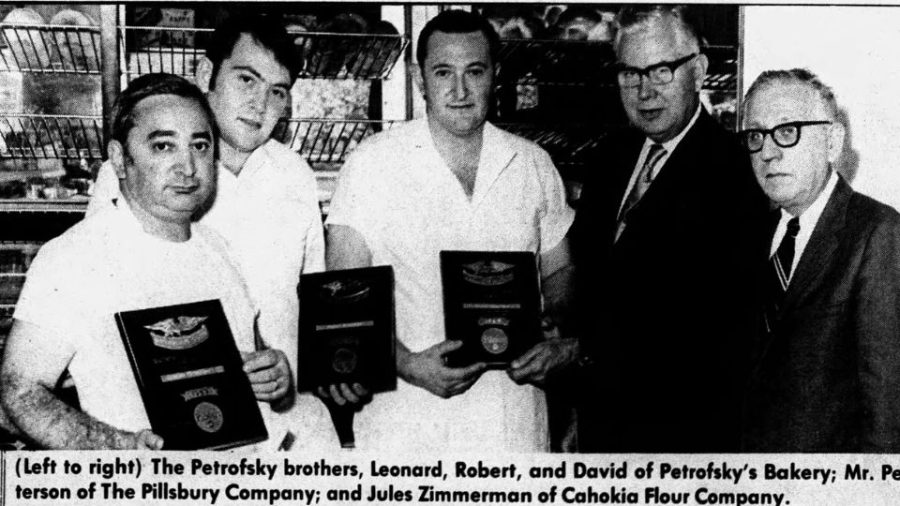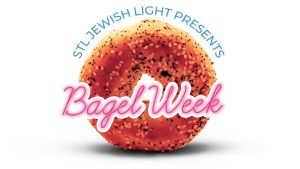A brief history of bagels in St. Louis
Published January 15, 2023
With three new bagel shops slated to open in the first quarter of 2023, it is fair to say that St. Louis is enjoying a “Bagel Renaissance.” We know you love bagels and we do too, so we thought it was high time to really explore the history of bagels in America and discover why they are so “Jewish.”
The earliest bagel legends
There are countless books written on the history of the bagel, but the one that perhaps best explains this complicated story is “The Bagel Bible,” by Marilyn and Tom Bagel (yes, Bagel is their real last name.) The book suggests two possible histories.
First, the bagel was invented by a Jewish baker in Vienna in 1683 thanks to King John III Sobieski of Poland, who defeated the invading Turks. The baker crafted a hard roll in the shape of a riding stirrup to honor the king. The bread’s original name was “bügel,” which is German for stirrup.
ADVERTISEMENT
Others contend that the earliest form of the term comes from the Yiddish word “beygl.” This word is found in the communal writings of the Jewish community of Krakow as early as 1610. Bagels were served at the meal following a burial to signify the circle of life.
The bagel comes to America
The bagel arrived in the United States with Jewish immigrants from Poland in the late 19th century. Long before it was schmeared with cream cheese and topped with lox, capers, tomatoes and thinly sliced red onions, it was sold on the streets of New York City’s Lower East Side stacked up on poles or hung from strings — that’s why they have a hole — for people to buy and enjoy on the street. It was simple, comforting peasant food.
It is also theorized that the bagel is a descendent of the German pretzel, which is another yeasted dough bread that is boiled and then baked. The boiling and baking process means that bagels stay fresher longer, which for poor Jews, was really important.
ADVERTISEMENT
As Jews immigrated from Europe to North America, many settled in Toronto and Montreal, Canada, which created their own style of bagels distinct from the New York style. Meanwhile in New York City, there were so many bagel makers that Local 338, a bagel makers trade union, was created in 1915.
According to the Bagels’ book, “During the Depression the bagel became known as the ‘Dough Jones Index’ where the bigger the hole the less dough was used: this was a sign of hard times.”
The next big marker in bagel history came in 1950s when a California teacher turned inventor named Daniel Thompson invented the “bagel machine.” The New York Times described it as, “The invention that changed the American diet, ushering in the welter of packaged bagels — notably Lender’s — now found in supermarkets nationwide, and making the bagel a staple of fast-food outlets.”
In 1963, a Jewish immigrant named Harry Lender was the first to use Thompson’s machine, turning his small bagel business into the largest bagel seller in the world.
Eventually the bagel, cream cheese and lox became a quintessential Sunday morning staple as we know it today. One of the things we love about bagels is that they are an iconic New York-ish, Jewish, mash-up food that tells an immigrant story through one simple food.
St. Louis bagel history: Pratzel’s Bakery
The first family bakery associated with bagels in St. Louis was Pratzel’s Bakery. Opened in 1913, Pratzel’s became a landmark in Jewish St. Louis, before closing in 2011. The bakery’s boiled bagels became known as some of the best in St. Louis, developing an almost cult-like following.
In the April 28, 2004, issue of the Jewish Light, editor-in-chief emeritus Bob Cohn wrote, “Legions of St. Louis Jews remember the aroma of freshly baked, steaming hot bagels sold from the back door of the original Pratzel’s Bakery at 509 Eastgate Avenue in St. Louis. Nothing was more satisfying to generations of Washington University fraternity and sorority members than going to Pratzel’s for their “bagel fix” after a party.
St. Louis bagel history: Petrofsky’s Bakery
Located at 7649 Delmar Blvd., Petrofsky’s Bakery opened in 1938 and was for decades St. Louis’ only kosher bakery. In 1984, the bakery began marketing its famous “gourmet bagels” nationwide after developing a unique method of mixing and freezing raw bagels and distributing them to supermarkets for in-store baking. In 1993, the company was purchased by Quaker Oats.
St. Louis bagel history: Marlin Klein
In the August 10, 1983 issue of the Jewish Light, freelance writer Shelly Goodman-Solomon chronicled how until the 1960s all the bagels in the St. Louis area were prepared by hand and available only in kosher markets.
“Marlin Klein, the bagel entrepreneur of St. Louis, was hired by a local group of St. Louis businessmen to go to New York and learn how to make New York bagels,” wrote Goodman-Solomon. “From that experience, he brought back with him what would be St. Louis’ first introduction to New York bagels, and a firsthand look at what would become the promotion of a bagel from beyond an ethnic produce.”
Klein was considered a bagel innovator for making his dough differently. He owned the New York Bagelry shops that many St. Louisans remember. One was located in Jeffery Plaza in University City and another in Creve Couer in the West Oak shopping center and yet another in Bridgeton.
He used only five ingredients: flour, malt (barley flour), salt, yeast and water. The result was his recipe for success. By 1995, Klein was producing 3,200 dozen bagels a day and shipping to seven states from his distribution plant in Bridgeton.
St. Louis bagel history: The Bagel Factory
For nearly 50 years and under varying owners, the Bagel Factory in Creve Coeur was the place to go. The storefront’s popularity was due in part to providing fresh, hot, New York-style water bagels that came in several varieties, including sesame, pumpernickel, blueberry, salt and tzizel. It’s a labor-intensive process, but the ingredients are simple.
“They’re very basic,” former Bagel Factory head baker Jeff Harlow told the Jewish Light in 2016. “The dough is made from high gluten flour, salt, sugar, yeast and calcium propionate. The flower is called Big 15 because it is 15% vital wheat gluten.”
The high gluten content is responsible for the chewy bagel consistency.
The Bagel Factory closed just before Christmas, but those involved are confident the shop will be back in business before too long.
Still making St. Louis bagel history
Despite the closing of the Bagel Factory, the future of bagel making in St. Louis remains strong and is growing. In our Ultimate Guide to St. Louis Homemade Bagels, you’ll find listings for three new brick-and-mortar bagel shops that are opening soon, Lefty’s in Chesterfield, C&B Boiled Bagels in Woodriver, Illinois and Bagel Union in Webster Groves. And, we even have heard there could be a fourth new bagels shop opening in St. Louis perhaps sometime in the next year.






















